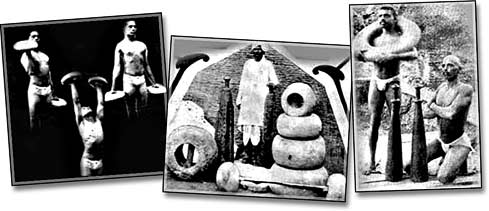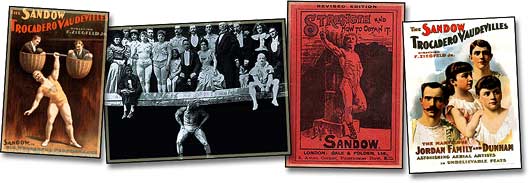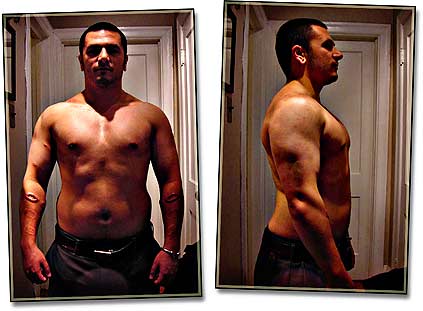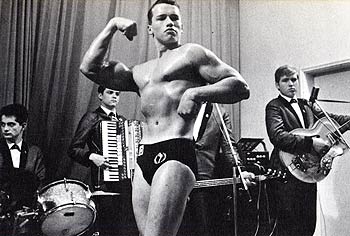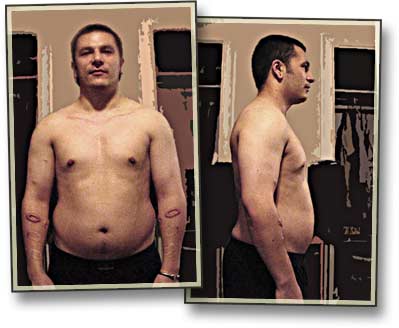
“…for the mind is verily restless, O Krishna! It is impetuous, strong and difficult to bend; I deem it as hard to curb as the wind.”
“Without doubt, O mighty-armed, the mind is hard to curb and restless; but it may be curbed by constant practice and by indifference.”
– Arjuna, from the Bhagavad-Gita
However you look at it, pushing yourself physically is hard work. As human beings, we’d much rather be doing something less stressful and less physically involved. Whether it be body piercing, tattoos, weight lifting or running a marathon, we always approach such activities with trepidation. After all, wouldn’t you rather be at home, reading a book? Or watching a movie? Or drinking with your friends?
I have to admit that I have days where the last thing I want to do is go to the gym, where I destroy my muscle fibers for an hour, and then run my ass off for another 30 minutes. It’s hard to pinpoint exactly why, but “off-days” aren’t uncommon. So I wonder what keeps me going. Why I’m even bothering to sweat buckets under hundreds of pounds of weight every day. Maybe you’ve made an appointment to get your first cartilage piercing, and even though you’ve heard disaster stories, you still get to the shop on time and go through with it. What makes us conquer these fears?
Of course, there is no easy answer. While we’ve all overcome some of our fears regarding activities like piercing, tattooing and scarification, this is where bodybuilding and heavy physical exercise differs greatly. For the most part, the formerly-mentioned activities are isolated incidents, something that we do once (or maybe twice), and thoughts of the eventual outcome gets us through the process. In this case, the few moments of pain (and weeks of aftercare) are worth it, because you’re instantly gratified with a shiny new piece of jewelry, or new colours under your skin. While tattoos can take weeks to heal, they are basically very easy to care for and don’t require much effort on a daily basis — you don’t really need to think about it, other than to keep it clean. Once the piece is finished, you can forget about it.
Bodybuilding, on the other hand, has an influence on your life unlike any other activity I can think of. Assuming you are following a basic four-day (weekly) routine, this means that you’ll be spending about 4 to 8 hours in the gym every week. No, it’s not a lot of time, but realize that it’s getting significantly more time dedicated to it than any other body modification activity I can think of. And all of that work in the gym is for naught if you’re not eating well and getting plenty of rest, both of which can consume your life. Ask anybody who’s started a fitness plan recently, and they’ll tell you that it’s all they can think about — everything you do outside of the gym will affect your performance once inside it. Want to go out drinking four nights a week like you did back in college? Forget about it. No more fast food. No more late nights. You’ll always need access to good-quality food and plenty of water. This is hard work.
Who has put more effort into their body modifications?
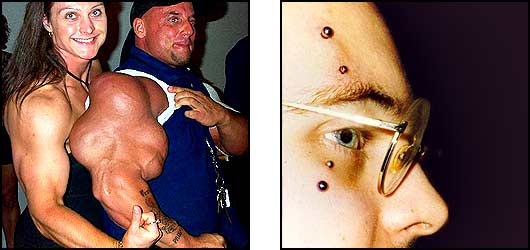
Left: Heather Darling with Gregg Valentino (photo: bigheatherd.com), Right: BME’s Shannon Larratt, 1995.
So, again, why do I do it? Why does anybody put their body through something traumatic? Is it for the results? Or is it the journey, rather than the destination?
As a professional body piercer, I’ve heard many of my peers talk about the ritual that surrounds such activities as piercing, scarification and body suspension (though interestingly enough, never about tattooing). While I’m still formulating my own ideas about how my job is considered a ritual act, I can’t deny that ritual does play a part in the piercing process. While many of my clients just want their piercing to be over with as quickly as possible, others are more concerned about being as relaxed as possible, and want me to breathe with them as I perform the act, for example. Whatever makes it easier for them, of course, but this is not specific to the bodily arts.
In the gym, with enough time to observe, I can point out the rituals of everybody there. Some people pace around for a few minutes between exercises, others walk to the water fountain (which is different than bringing your own water bottle), others will repeatedly perform very obviously ritualistic movements to “psych” themselves up before lifting a heavy weight. Again, whatever works — whatever it takes for your mind to make the decision that it can, in fact, lift that weight. And it can, of course, but your mind must be in the ‘right place.’ You’ve all experienced this immediately before a body modification — and it’s a very important part of the ritual for many people.
As an athlete since my childhood, it’s been drilled in my head that sport is “ninety percent motivation, ten percent perspiration,” which means exactly what it sounds like — that most of the work to be done is mental, and the physical will follow. Of course, it’s not that simple — we can’t measure something like this. And if this were the case, then all I’d have to do in the gym to get in shape would be to lift weights for a few minutes, and think really hard for the remainder of the hour. If it were only that easy!
But mental state of mind is the biggest factor to influence our physical actions, whether they be bodybuilding or body modification. Those fitness models and athletes in great shape are truly dedicated to what they do. As I said before, it’s not easy lifting all those weights every day, but something keeps these people coming back for more.
It’s been said that visualization is the key to achieving your goals, no matter what they may be, and this can certainly be applied to exercise. To build muscle, you must tear the muscular tissue. This means lifting weights heavier than you’re comfortable with. So how do you make progress? You’ll only make gains if you’re lifting weights that technically you “can’t” lift — if six repetitions at a certain weight is your maximum, you’re going to have to lift eight repetitions to make any gains. Not easy, and something that lies entirely within your mind’s ability to overcome your physical limitations.
In other words, to take control over your own body.
Sound familiar? I’m sure you’ve heard such a phrase in regards to the type of body modification you’re interested in. Piercing, tattooing or scarification (to name a few) are a major mind-fuck for many people. You go into that body art shop knowing that you’re paying somebody to hurt you. Have you ever thought about what kind of conscious effort that takes? It’s certainly very difficult to overcome what you thought were your limitations. Not to take away from the experience (I still get nervous when I get pierced, even after dozens), but people who are serious about bodybuilding feel very similar sensations every single day. Oftentimes it’s only the thought you know, somewhere in your heart, that you’ll live to see another day that gets you through the workout. Or the piercing. Or the suspension.
So for all of you who’ve been asking what bodybuilding has to do with body modification, this is just one example. Both activities take a conscious mental effort to overcome our physical limitations, exercising the mind as well as the body. We’re not so different, after all.
Camille Paglia once said, “Modern bodybuilding is ritual, religion, sport, art, and science, awash in Western chemistry and mathematics. Defying nature, it surpasses it.”
![]()
Dustin Sharrow
PS. I’m very happy to report that my partner is now training three times a week at a mixed martial arts and grappling combat gym. While it is very different from my efforts at getting into shape, she’s loving every minute of it, and subsequently health and fitness have taken on a new importance to both of us, and I couldn’t be happier for her.
